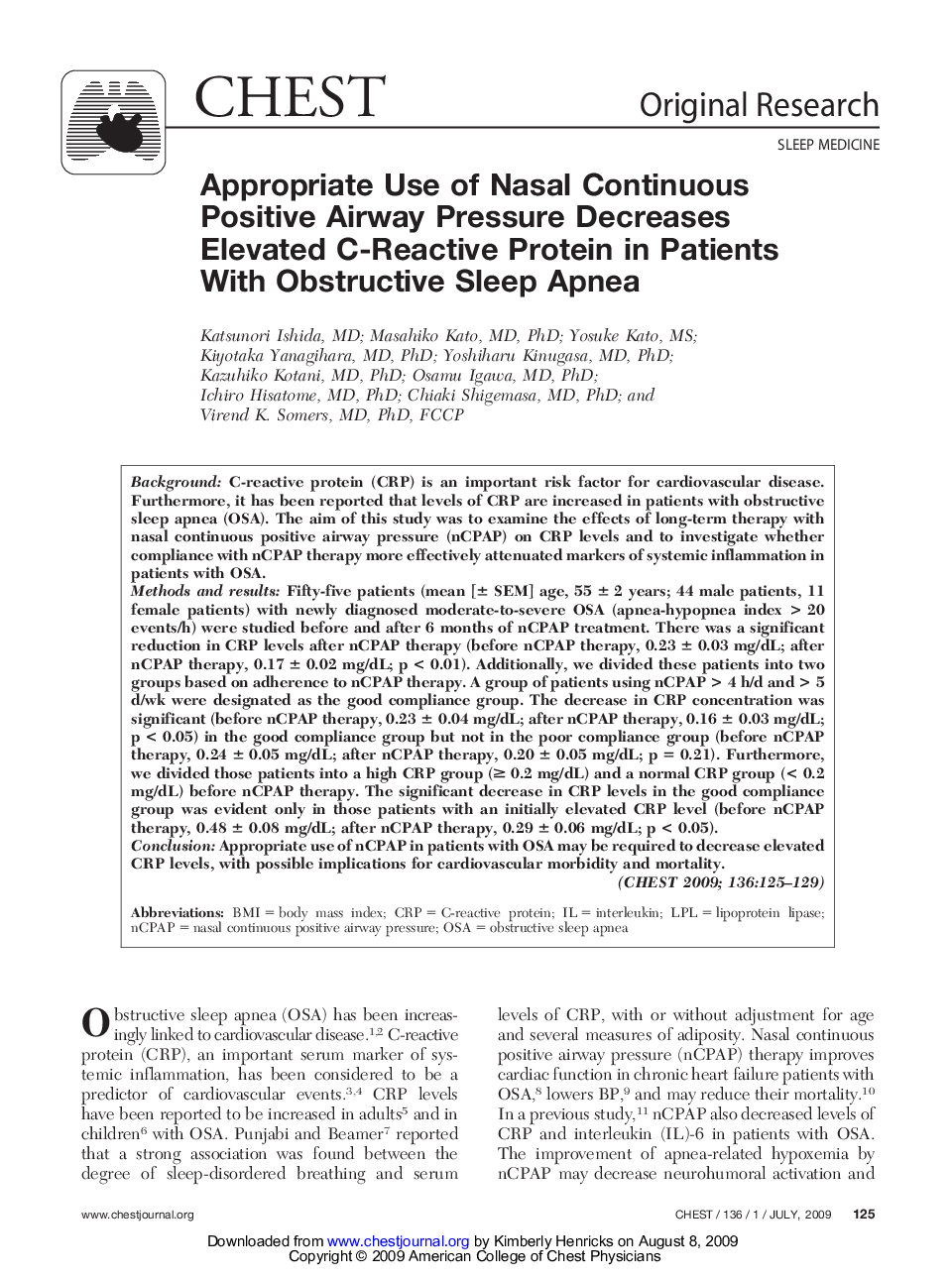| کد مقاله | کد نشریه | سال انتشار | مقاله انگلیسی | نسخه تمام متن |
|---|---|---|---|---|
| 2905385 | 1173426 | 2009 | 5 صفحه PDF | دانلود رایگان |

BackgroundC-reactive protein (CRP) is an important risk factor for cardiovascular disease. Furthermore, it has been reported that levels of CRP are increased in patients with obstructive sleep apnea (OSA). The aim of this study was to examine the effects of long-term therapy with nasal continuous positive airway pressure (nCPAP) on CRP levels and to investigate whether compliance with nCPAP therapy more effectively attenuated markers of systemic inflammation in patients with OSA.Methods and resultsFifty-five patients (mean [± SEM] age, 55 ± 2 years; 44 male patients, 11 female patients) with newly diagnosed moderate-to-severe OSA (apnea-hypopnea index > 20 events/h) were studied before and after 6 months of nCPAP treatment. There was a significant reduction in CRP levels after nCPAP therapy (before nCPAP therapy, 0.23 ± 0.03 mg/dL; after nCPAP therapy, 0.17 ± 0.02 mg/dL; p < 0.01). Additionally, we divided these patients into two groups based on adherence to nCPAP therapy. A group of patients using nCPAP > 4 h/d and > 5 d/wk were designated as the good compliance group. The decrease in CRP concentration was significant (before nCPAP therapy, 0.23 ± 0.04 mg/dL; after nCPAP therapy, 0.16 ± 0.03 mg/dL; p < 0.05) in the good compliance group but not in the poor compliance group (before nCPAP therapy, 0.24 ± 0.05 mg/dL; after nCPAP therapy, 0.20 ± 0.05 mg/dL; p = 0.21). Furthermore, we divided those patients into a high CRP group (≥ 0.2 mg/dL) and a normal CRP group (< 0.2 mg/dL) before nCPAP therapy. The significant decrease in CRP levels in the good compliance group was evident only in those patients with an initially elevated CRP level (before nCPAP therapy, 0.48 ± 0.08 mg/dL; after nCPAP therapy, 0.29 ± 0.06 mg/dL; p < 0.05).ConclusionAppropriate use of nCPAP in patients with OSA may be required to decrease elevated CRP levels, with possible implications for cardiovascular morbidity and mortality.
Journal: Chest - Volume 136, Issue 1, July 2009, Pages 125–129